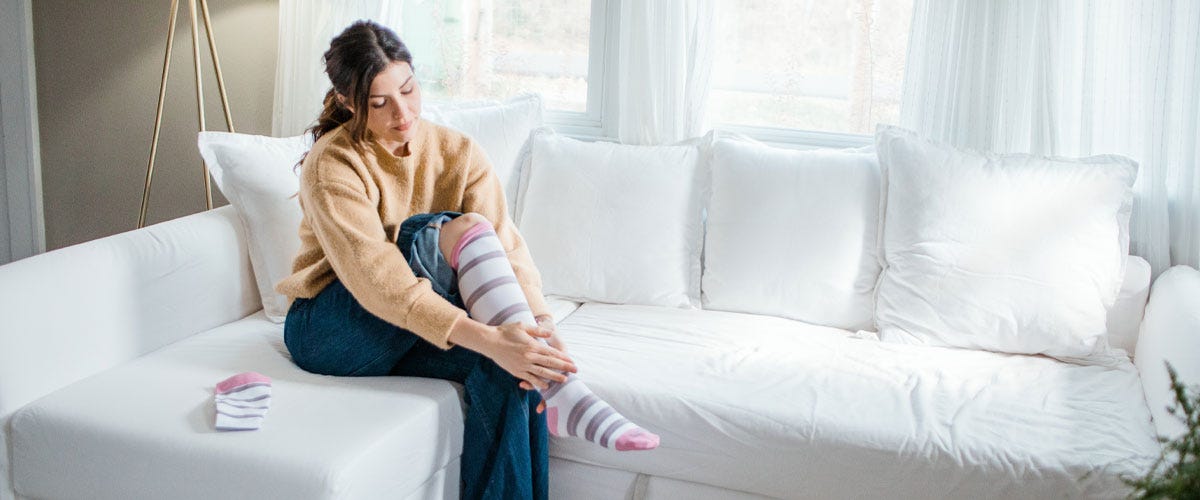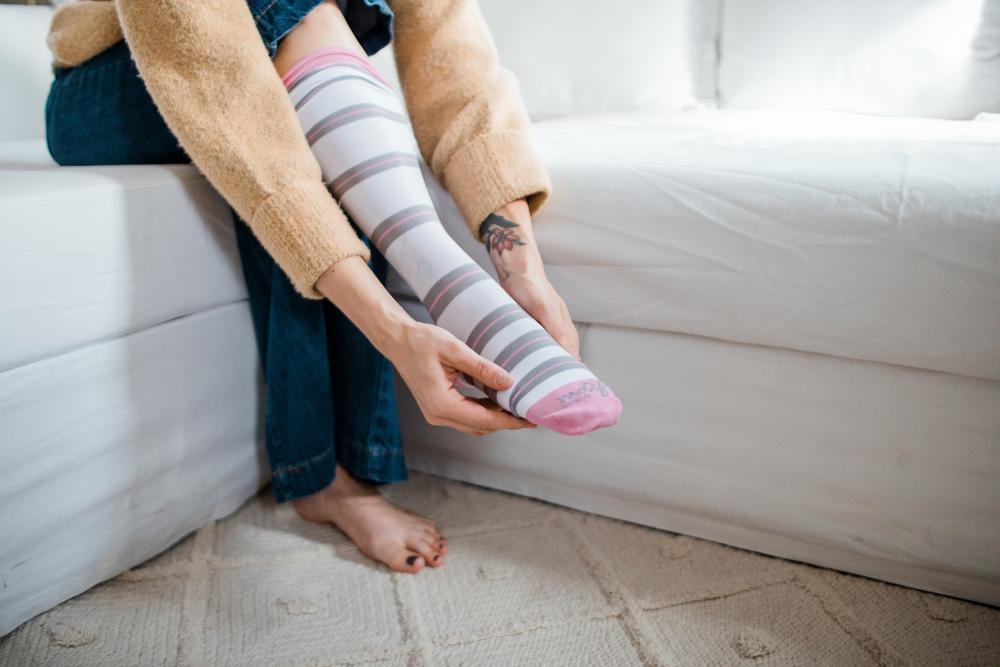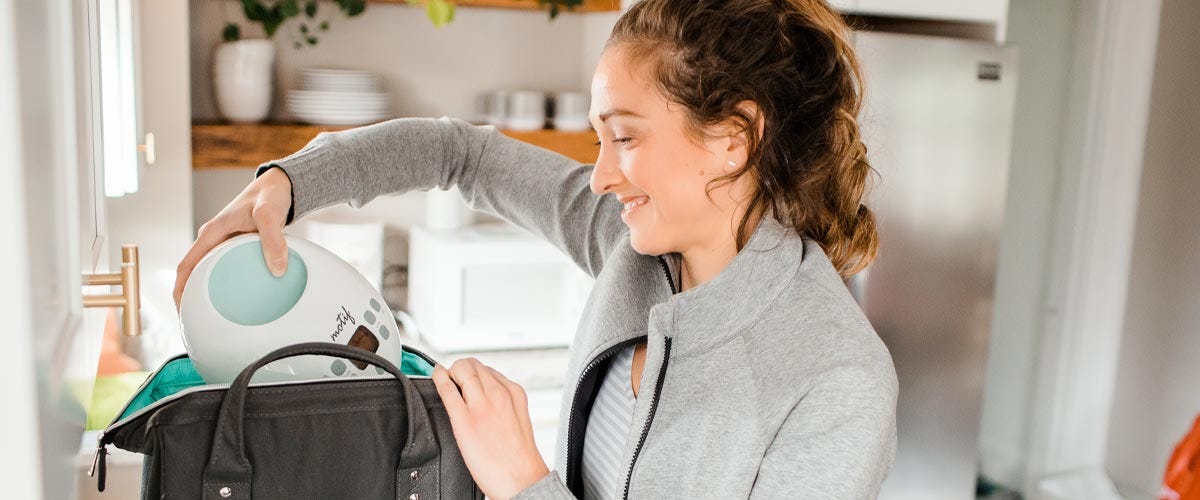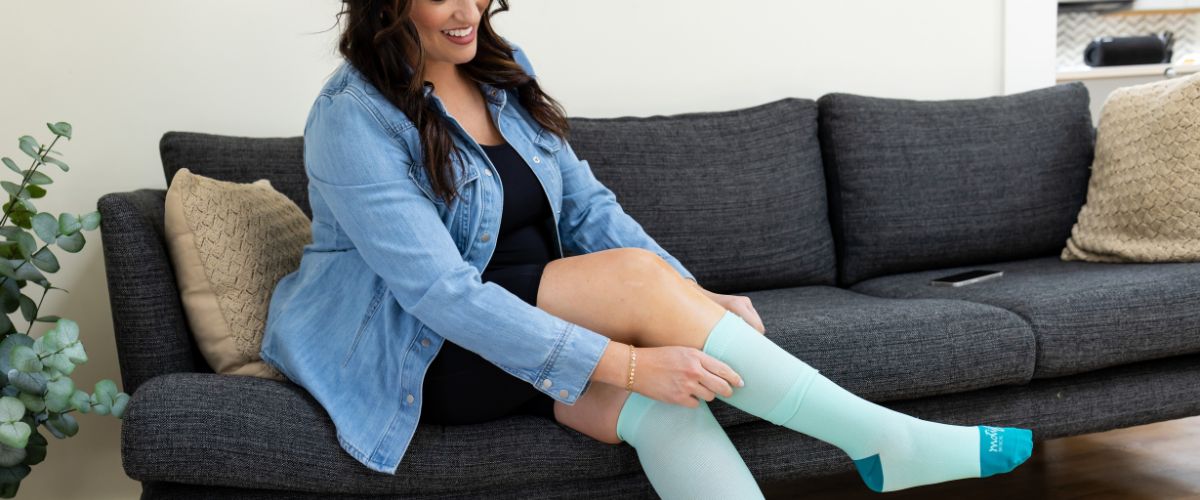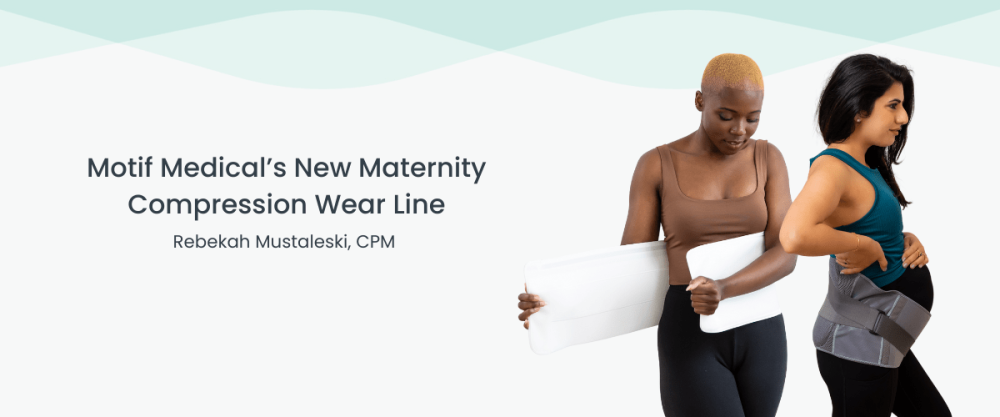Why would you wear compression socks while you’re pregnant? There are so many reasons! Pregnancy compression socks can help reduce discomfort in your feet and ankles, support your cardiovascular system by promoting good blood flow, and they can help you stay more comfortable when you’re on your feet for long periods of time. Every expecting mother should have at least one pair of compression socks for pregnancy.
Benefits of Pregnancy Compression Socks
Your lower extremities are affected by the additional workload of your growing baby, which results in poor circulation in your legs and feet. Wearing compression socks during pregnancy helps by reducing the diameter of the blood vessels in the legs, which improves the vessels’ ability to push the blood back up to the heart.
With this improved blood flow there is less swelling and discomfort, and it also reduces your risk of developing blood clots.
This also helps to prevent the development of varicose veins and support any varicose veins that you already have. If you are experiencing aching feet, swelling, varicose veins, or are at a high risk of developing DVT, your care provider may recommend you wear compression socks.


Sore feet, swollen ankles, and even varicose veins are common discomforts that many pregnant women experience. Most of the time, swelling, or edema, starts showing up toward the end of pregnancy, gets worse over time, and goes away completely after the baby is born. Any sudden or severe swelling should be reported to your healthcare provider. Even if your swelling is within the normal range, pregnancy compression socks can help alleviate aches and pains.
If you’re planning a hike, an all-day cooking session, or if your job requires you to be on your feet all day, then a pair of compression socks may very well be your new best friend! Wearing these socks will provide external support to keep the swelling minimal and reduce discomfort.
They also help pregnant women stay active and healthy by reducing some of the fatigue and leg pain associated with edema. It’s easier to maintain your day-to-day activities when you’re not also battling swelling in the lower legs, ankles, and feet.
To compensate, the blood vessels in your legs lighten their return load by pushing some of the fluid into the extracellular spaces. This is what causes the swelling.
Normal pregnancy swelling accumulates throughout the day and then starts to get better when you prop your feet up or go to bed at night. It’s easier for your body to maintain good blood circulation while it isn’t working against gravity.
Varicose veins, or spider veins, can also pop up in the legs, ankles and feet during pregnancy due to these circulatory changes. Varicose veins are enlarged and swollen veins that are overfilled with blood.
They are often painful or burn, are generally uncomfortable, and increase your risk of Deep Vein Thrombosis (DVT). Deep vein thrombosis can be a life-threatening condition caused by poor circulation when blood collects in vessels and forms a blood clot.
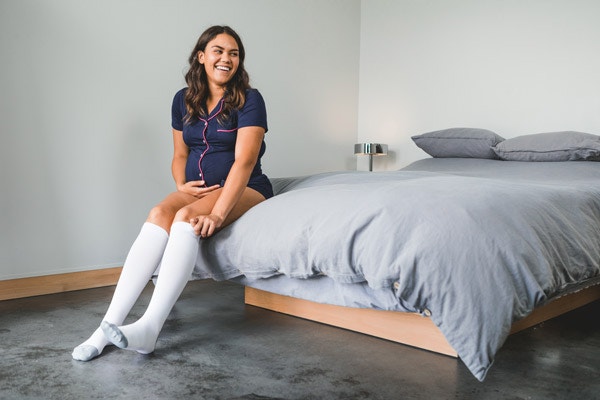

Swelling and Varicose Veins During Pregnancy
Up to 80% of pregnant women experience feet swelling (also known as Edema) in the third trimester. Blood typically flows from your heart, through your veins, and to your feet. Then blood flows back from your feet, through your veins, and returns to your heart in a one-way flow system. As your baby grows, your blood volume expands, your blood vessels dilate, and the pressure from the uterus on the pelvic veins increases. All of this makes this return blood flow more difficult.
When to Wear Compression Socks During Pregnancy
If you don’t typically have an issue with swelling or varicose veins, you may only want to wear your compression socks if you know you’re going to be on your feet a lot, plan to be walking/hiking, or exercising. It's great to have compression socks on hand when traveling since it's difficult to move around and be as active when you’re flying or driving. Once you get home and prop your feet up, you can take your compression socks off and enjoy the rest of the night. Just remember to put them back on in the morning—your feet will thank you!
If you do struggle with everyday swelling during your pregnancy and want to wear compression socks, I recommend putting them on before you get out of bed in the morning. Swelling in the feet and legs is usually minimal when you first wake up because a horizontal sleeping position prevents gravity from resisting the return blood flow from the lower extremities. Compression socks are much better at preventing foot and leg swelling from the start of the day than making it go away once it has accumulated.
How to Choose the Best Compression Socks for Pregnancy
When choosing pregnancy compression socks you’ll want to consider how they fit, the level and type of compression they provide, cost, and how they look too!

Fit: As with any maternity compression garment, the pressure of your graduated compression socks should be firm but not too tight. They should not cause your toes to get tingly or numb, but should provide noticeable support to your legs. They also shouldn’t be painful or difficult to pull on. The dangers of having compression socks that are too tight involve reduced circulation, pain, and damaging blood vessels in the lower leg.
Be sure to refer to size guide for the compression socks you would like to receive. The correct fit is crucial for providing proper support to prevent swelling and to improve blood circulation. If your socks are too loose they won’t provide enough pressure.
Level of Compression: There are different levels of compression available, from light to firm. Graduated compression socks provide the tightest fit at the foot and ankle, decreasing gradually in the lower leg. Many pregnant women prefer a medium to firm level of compression for maximum benefits and comfort.
Cost: Compression socks prices vary quite a bit, but most of them cost around $30. Unlike traditional pantyhose or socks, some compression socks for pregnancy may be eligible for coverage through health insurance.
Look: There are a range of style options available for compression socks - anything from neutral solids to bold patterns. With all the options available you’re sure to be able to find some that will fit well with your wardrobe.
Motif's compression socks are supportive where needed, but also easy to take off. They can be worn from month three of pregnancy through childbirth and into your postpartum weeks as swelling gradually subsides. They are available in a variety of patterns and solids. Motif's entire line of FDA-listed maternity compression wear, including compression socks, are eligible for coverage through many health insurance plans.

